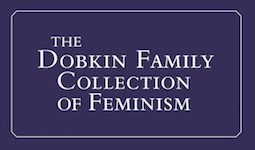Extracts from The Rights of Woman", in The Massachusetts Magazine Vol. IV, No. X
(Wollstonecraft, Mary). “Extracts from the Rights of Woman,” in The Massachusetts Magazine [Vol. IV, No. X]. Boston: Isaiah Thomas and Ebenezer T. Andrews At Faust’s Statue, No. 45, Newbury Street, October, 1792.
8vo; disbound (from a larger volume); lacking the original wrappers, but with the entire issue intact and title page present; considerable age-toning and some foxing to pages; a few pages loosened; about very good. Housed in custom-made case.
Early American appearance of excerpts, advertising the Boston printing. Mary Wollstonecraft’s A Vindication Of The Rights Of Women appeared in London in January of 1792. Contemporaries immediately recognized the importance of Wollstonecraft’s treatise. It received publication in the United States within the year as well as publication in Dublin the following year and additional printings in the United States and England through 1796. The Thomas and Andrews printing of A Vindication Of The Rights Of Women, forecast by these extracts, appeared, in fact, after that by William Gibbons in Philadelphia. (While it has not been possible to place with certainty the printing of the extracts in relation to the Philadelphia text, likely the extracts, as well as the Boston printing of Vindication, appeared after the Gibbons'. The writer’s name appeared as “Woolstonecraft” in the Philadelphia printing, but was corrected to “Wollstonecraft” in the Boston printing. The misspelling in the magazine suggests that Thomas and Andrews may have been working from Gibbons' text.) The Wollstonecraft text ( 598-599) appears under the heading “For The Massachusetts Magazine. Extracts from the Rights Of Woman. [Extracted from a new Work, lately published in England, entitled, “A Vindication of the Rights of Woman,” by Mary Woolstonecraft.*] The fourteen passages, which follow, are epigrams and homilies only vaguely suggesting the main thrust of the book though reflecting the flavor of Wollstonecraft’s writing. For instance: “To become respectable, the exercise of the understanding is necessary, there is no other foundation for independence of character”; or “Love, considered as an animal appetite, cannot long feed on itself without expiring.”
From 1792 the magazine published Judith Sargent Murray’s The Gleaner, “one of the best-known essay serials of the postrevolutionary period.” Writing as “Constantia,” Murray contributes paragraphs on “Death,” “Dissimulation” and “Spring.” Like other magazines of the day, the Massachusetts Magazine sought to offer something for everyone. There are a gazette of foreign and domestic news, reviews of recent publications, a meteorological table for the month of October, an essay on military life, a piece on Saratoga Springs, poems, and a short story. The extracts from Vindication are of particular interest for what they suggest about American interest in the title and the printers' own views. With appearances by Mary Wollstonecraft and Judith Sargent Murray in the same issue, this Massachusetts Magazine offers an uncommon conjunction of two key 18th century women writers.
Cambridge History Of American Literature, Vol. One, pp. 558-560.
Concise Dictionary Of American Biography, p. 1057.
(#4969)
Print Inquire


